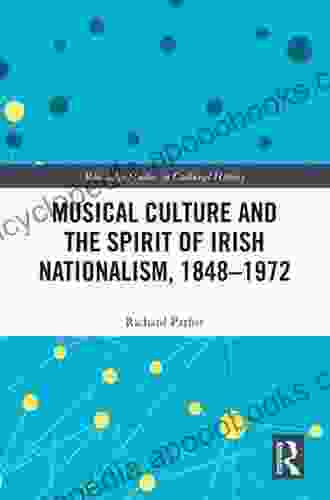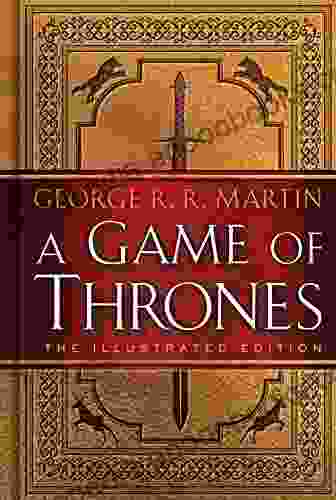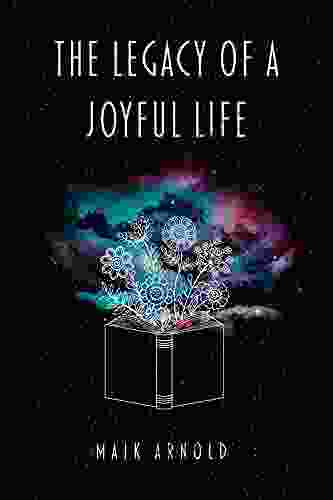Musical Culture and the Spirit of Irish Nationalism, 1848-1972

Music has long been an integral part of Irish culture, playing a vital role in shaping the country's identity and aspirations. During the tumultuous period from 1848 to 1972, music became a powerful tool for expressing Irish nationalism, galvanizing the people and providing a sense of unity during times of political upheaval and social change.
5 out of 5
| Language | : | English |
| File size | : | 3277 KB |
| Text-to-Speech | : | Enabled |
| Screen Reader | : | Supported |
| Enhanced typesetting | : | Enabled |
| Word Wise | : | Enabled |
| Print length | : | 300 pages |
This article explores the complex interplay between music and Irish nationalism, examining how melodies, lyrics, and performances reflected the hopes, dreams, and struggles of the Irish people. We will trace the evolution of Irish nationalist music from its early roots in traditional folk songs to its transformation into a more sophisticated and organized form in the late 19th and early 20th centuries.
The Early Years: Traditional Folk Songs
The origins of Irish nationalist music can be traced back to traditional folk songs that were passed down orally through generations. These songs often depicted the hardships and injustices faced by the Irish people under British rule, and they expressed a longing for freedom and independence.
One of the most famous examples of an early Irish nationalist folk song is "The Wearing of the Green." Written in the 1790s, the song became a popular anthem during the 1798 Rebellion, a failed attempt by the Irish to gain independence from Britain. The song's lyrics celebrate the color green, which has long been associated with Irish nationalism, and they express a determination to fight for freedom:
> "Oh, Paddy dear, and did you hear the news that's going round? > The shamrock is by law forbid to grow on Irish ground! > No more Saint Patrick's Day we'll keep, his colors we'll display, > And Erin's sons will wear the green when marching in parade."
The Rise of Organized Nationalism
The middle of the 19th century saw the rise of organized Irish nationalism, with the establishment of groups such as the Young Irelanders and the Fenian Brotherhood. These groups advocated for Irish independence through political agitation and, in some cases, armed rebellion.
Music played a central role in the activities of these nationalist organizations. In 1845, Thomas Davis, a leading figure in the Young Ireland movement, founded the Irish Ballad Society, which aimed to collect and preserve traditional Irish folk songs. Davis believed that music could help to unify the Irish people and inspire them to fight for their freedom.
During the Fenian Rising of 1867, music was used to rally support for the rebels and to spread their message of Irish independence. The Fenian anthem, "God Save Ireland," was written by T. D. Sullivan and became a popular rallying cry for Irish nationalists.
The Late 19th and Early 20th Centuries: A Golden Age of Irish Music
The late 19th and early 20th centuries witnessed a golden age of Irish music. This period saw the emergence of a new generation of Irish composers and musicians who combined traditional folk elements with classical music influences to create a unique and distinctively Irish sound.
One of the most influential figures of this period was the composer Charles Villiers Stanford. Stanford was born in Dublin in 1852, and he studied music at the Royal College of Music in London. Stanford's music often drew on Irish folk melodies, and he played a significant role in promoting Irish music on the international stage.
Another important figure of the period was the singer John McCormack. McCormack was born in Athlone, Ireland, in 1884, and he became one of the most successful opera singers of his generation. McCormack's repertoire included many Irish folk songs, and he helped to popularize Irish music around the world.
Music and the Irish Revolution
Music continued to play a vital role during the Irish Revolution, which took place from 1916 to 1923. The Easter Rising of 1916, an armed uprising against British rule, was accompanied by a wave of new nationalist songs, such as "The Soldier's Song" and "The Foggy Dew." These songs celebrated the heroism of the Irish rebels and mourned the sacrifices they made for their country.
After the Easter Rising, music continued to be used by Irish nationalists to promote their cause. The Irish Republican Army (IRA),which fought for Irish independence during the Irish War of Independence (1919-1921),adopted a number of traditional Irish folk songs as its anthems, including "The Wearing of the Green" and "The Minstrel Boy."
Music in Independent Ireland
After Ireland gained independence in 1922, music continued to play an important role in Irish society. The government established a number of institutions to promote Irish music, including the Irish Folklore Commission and the Radio Telefis Éireann (RTÉ) Symphony Orchestra.
In the decades following independence, a number of new Irish composers emerged, including Seán Ó Riada and John Field. These composers drew on traditional Irish music to create new and innovative works that reflected the changing social and political landscape of Ireland.
Music has played an integral role in the history of Irish nationalism, providing a powerful means of expressing the hopes, dreams, and struggles of the Irish people. From the early days of traditional folk songs to the more sophisticated music of the late 19th and early 20th centuries, music has been a constant companion on Ireland's journey to independence.
Even today, music continues to play an important role in Irish society. Irish music is celebrated around the world, and it remains a source of pride and inspiration for the Irish people.
5 out of 5
| Language | : | English |
| File size | : | 3277 KB |
| Text-to-Speech | : | Enabled |
| Screen Reader | : | Supported |
| Enhanced typesetting | : | Enabled |
| Word Wise | : | Enabled |
| Print length | : | 300 pages |
Do you want to contribute by writing guest posts on this blog?
Please contact us and send us a resume of previous articles that you have written.
 Book
Book Novel
Novel Page
Page Chapter
Chapter Text
Text Story
Story Genre
Genre Reader
Reader Library
Library Paperback
Paperback E-book
E-book Magazine
Magazine Newspaper
Newspaper Paragraph
Paragraph Sentence
Sentence Bookmark
Bookmark Shelf
Shelf Glossary
Glossary Bibliography
Bibliography Foreword
Foreword Preface
Preface Synopsis
Synopsis Annotation
Annotation Footnote
Footnote Manuscript
Manuscript Scroll
Scroll Codex
Codex Tome
Tome Bestseller
Bestseller Classics
Classics Library card
Library card Narrative
Narrative Biography
Biography Autobiography
Autobiography Memoir
Memoir Reference
Reference Encyclopedia
Encyclopedia Ann Napolitano
Ann Napolitano Harry Gratwick
Harry Gratwick William Martin
William Martin Anne M Beninghof
Anne M Beninghof John Lescroart
John Lescroart Paige A Mcginley
Paige A Mcginley Anne Freytag
Anne Freytag Mimi Zollars
Mimi Zollars Chad Holbert
Chad Holbert Meg Ripley
Meg Ripley Karl M Kapp
Karl M Kapp Telma Rocha
Telma Rocha David Pogue
David Pogue Kyle Scott
Kyle Scott David Starr Jordan
David Starr Jordan Todd Bensman
Todd Bensman 1st Ed 2021 Edition Kindle Edition
1st Ed 2021 Edition Kindle Edition Valentina Quarta
Valentina Quarta D D Peters
D D Peters Carrie Magillen
Carrie Magillen
Light bulbAdvertise smarter! Our strategic ad space ensures maximum exposure. Reserve your spot today!

 Paulo CoelhoFetch Angel Paws: A Heart-Warming Tale of Resilience and the Unbreakable Bond...
Paulo CoelhoFetch Angel Paws: A Heart-Warming Tale of Resilience and the Unbreakable Bond...
 Kenzaburō ŌeMy Everyday Hero, Sam: A Heartfelt Story of Love, Loss, and the Unforgettable...
Kenzaburō ŌeMy Everyday Hero, Sam: A Heartfelt Story of Love, Loss, and the Unforgettable... Jeffery BellFollow ·16.9k
Jeffery BellFollow ·16.9k Brent FosterFollow ·18.5k
Brent FosterFollow ·18.5k Alvin BellFollow ·12.5k
Alvin BellFollow ·12.5k Eliot FosterFollow ·4.4k
Eliot FosterFollow ·4.4k Charles ReedFollow ·4.7k
Charles ReedFollow ·4.7k Bryce FosterFollow ·9.3k
Bryce FosterFollow ·9.3k Troy SimmonsFollow ·14.8k
Troy SimmonsFollow ·14.8k Thomas PynchonFollow ·5.1k
Thomas PynchonFollow ·5.1k
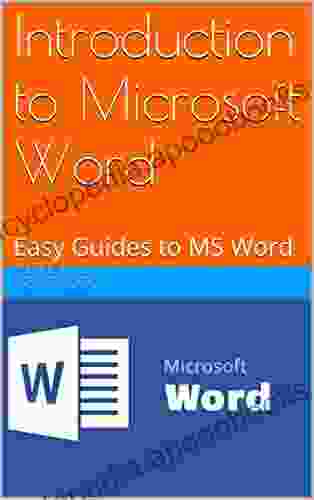
 Jacob Hayes
Jacob HayesUnlock the Power of Microsoft Word: A Comprehensive Guide...
Microsoft Word is a widely used word...
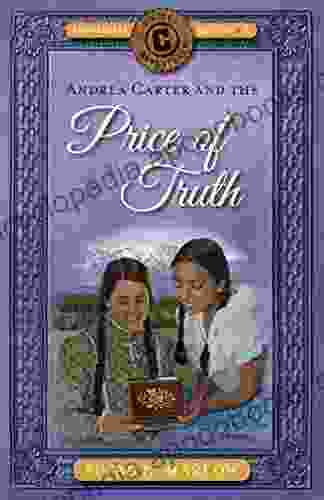
 Hunter Mitchell
Hunter MitchellAndrea Carter and the Price of Truth: A Thrilling...
Get ready for an unforgettable...
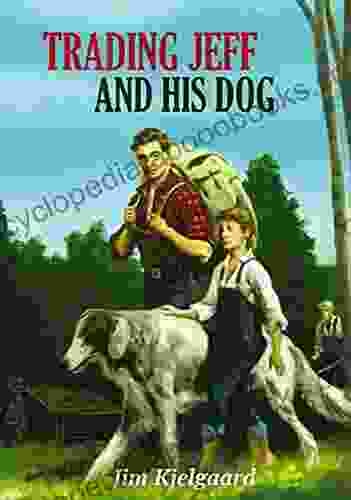
 Ivan Turner
Ivan TurnerTrading Jeff and His Dog: An Unforgettable Adventure of...
Get ready for an emotional rollercoaster...

 Langston Hughes
Langston HughesGo Viral TikTok: The Ultimate Guide to Gaining 100K...
TikTok has emerged as a social...

 Ibrahim Blair
Ibrahim BlairUnveil the Enchanting Realm of Short Fiction: Dive into...
Delve into a Literary Tapestry of...
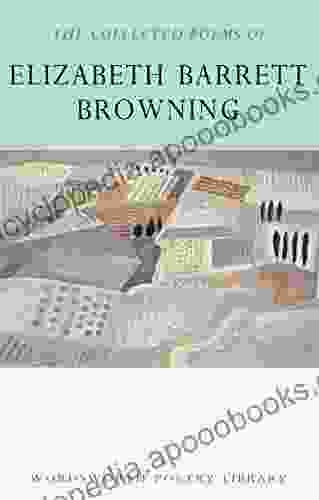
 Tennessee Williams
Tennessee WilliamsUnveil the Enchanting World of Elizabeth Barrett...
A Poetic Tapestry of Love, Loss, and...
5 out of 5
| Language | : | English |
| File size | : | 3277 KB |
| Text-to-Speech | : | Enabled |
| Screen Reader | : | Supported |
| Enhanced typesetting | : | Enabled |
| Word Wise | : | Enabled |
| Print length | : | 300 pages |


